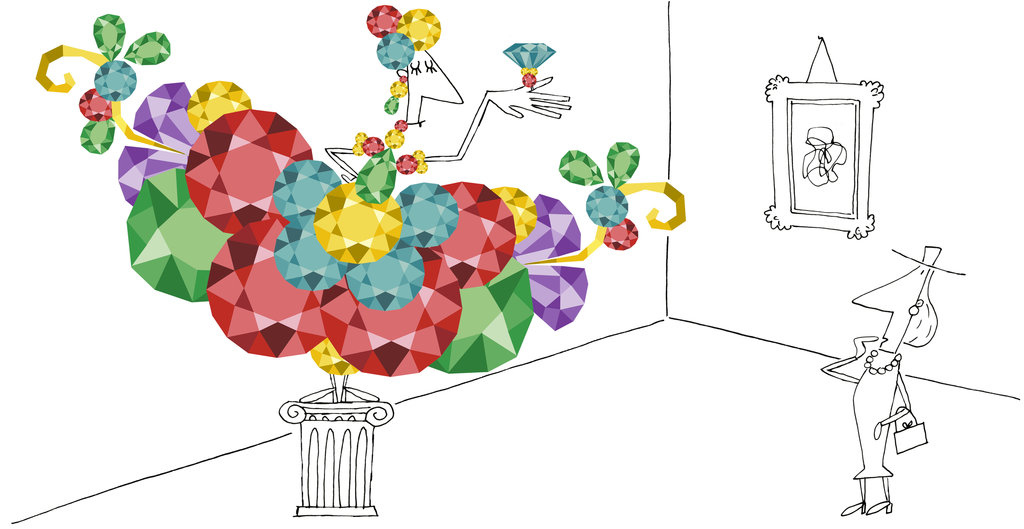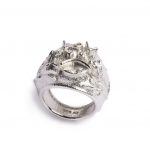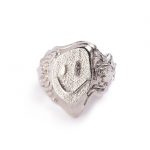Since the rise of post-modern and contemporary art movements in the past century, the line between art and design has become increasingly blurred. On the one hand, there are those who define art as being form for the sake of form, while others see the artistic elements of everyday objects designed with form at the forefront.
One arena where this tension has become quite clear is in the realm of jewelry. We live in a modern world where we can decorate ourselves with mass-produced trinkets, but do those shiny objects constitute true art? What about the pieces that are formed with a skillful eye and hand?
Here, we’ll explore the relationship between jewelry and high art, plus we’ll see some examples from the creators who brought jewelry into the realm of art and the contemporary artists who use jewelry as their medium of expression.
Can Jewelry Be Considered Art?
When it comes to defining art, there is a wide array of definitions out there. But the most basic and general definitions agree that art should be creative, communicative, and relevant to the community it is displayed in. When you look a little closer, you’ll see that custom-designed (as opposed to mass-produced) jewelry ticks all these boxes, making it more than just a handicraft.
Overall, given the broad definition of art and the understanding that not all jewelry is art, how can we define “wearable art” when it comes to jewelry? Usually, this distinction is made clear by the artist. Often, the person who designed the wearable art and the person who implemented the design – often by hand, in a studio, with a set of specific tools that they are specially trained to use. This sets a bespoke piece of wearable art apart from simple mass-produced pieces of jewelry.
Also, if the piece was made by a person who put plenty of thought and intention into the creation of the work, while also drawing on clear and articulatable inspiration, then that piece can be considered a work of art. Even if the jewelry is slammed by critiques or not taken very seriously or never becomes well-known, the intention and skill of the artist make that jewelry artwork.
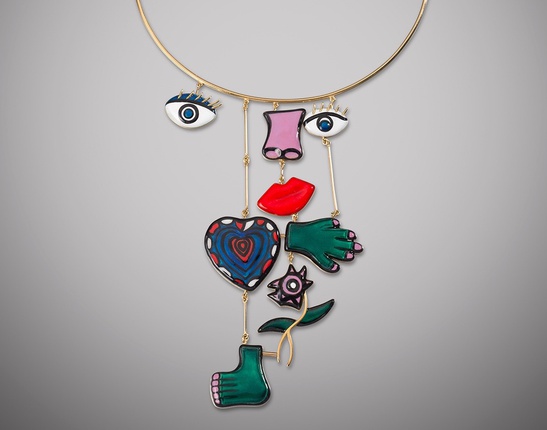
Another key indicator that a piece of jewelry can also be considered a work of art is the reactions from you, the perceiver. Does this jewelry inspire an emotional response, especially one that resonates with the artist’s original intention? Does the story or insight that inspired the piece shine through to the viewer when they see the jewelry? If so, this piece could very likely be considered a work of art.
Based on all these criteria, you can determine whether a piece of jewelry is in fact a work of wearable art. Of course, these distinctions are certainly subjective at points, but a careful eye and a deeper understanding of how the piece was conceived, how it was created, and how it was produced will also give clearer insight.
Visionary Artists That Merge Art with Jewelry
It’s not easy to draw the line between what is wearable art and what is “merely” jewelry, especially since the intrinsic value of the jewels and precious metals that compose the piece are often considered before its artistic value. But despite this hurdle, there are plenty of contemporary jewelers who are also fulfilling their roles as true artists.
For example, one of the first mid-century jewelry designers to really bring the form into the art realm was Margaret de Patta. She had clear vision about the form of her pieces, with an emphasis on color and how each piece took up space; her ideas were directly in line with fundamental concepts of sculpture. In her work, we see the artistic intention and commitment to evoking specific reactions from the view that is characteristic of art.
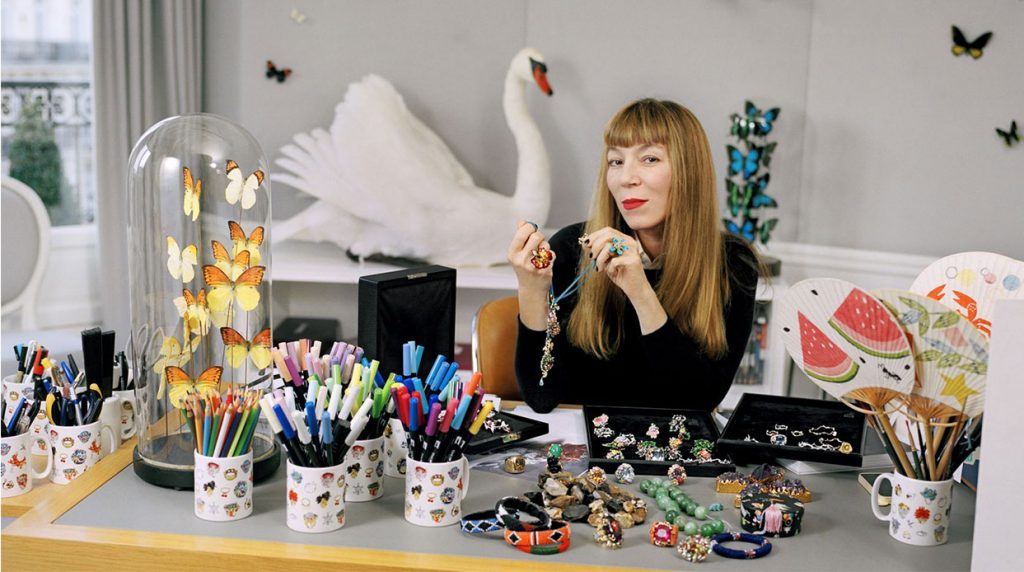
Another prominent – and contemporary – artist who uses jewelry as her medium is French designer and jeweler Victoire de Castellane. She currently works as a head designer for Dior Jewelry where she explores aspects such as texture, form, and color. These are the same elements that a photographer or painter would consider throughout the creative process; it’s clear to see how her own process and skillful application of technique put her in the same category as other artists.
Other contemporary jewelry-medium artists are also out to make wearable statements. One such artist is Estonian artist Darja Popolitova. Her recent “Save As” collection was meant to send a direct message about the mass-produced jewelry industry. Her work makes clear use of Dadaist elements while her medium – 3D printing – is a high-tech development on the form. Her pieces started as found 3D printing designs that she then extorted and modified, also incorporating a performative element as she filmed dramatized and stylizing scenes of much of the process. All these added elements help to define her jewelry as wearable art.
Final Thoughts
Jewelry as wearable art is a valid and well-defined niche in the art world, with its own history and development throughout the past century or so. Bespoke jewelry that exhibits the skill, message, and intention of the artist falls in line with the broadly accepted definitions of art. Although the value of jewelry as wearable art is often conflated with the price tag of the raw materials needed to implement the design of the piece, there is an underlying and valid artistic value to these pieces as well.
Contemporary artists all around the world continue to use and develop jewelry as wearable art, with new movements and messages emerging in the medium every season.
About the Author: Margaret Bell is a writer with The Pearl Source. When she’s not keeping up with the latest fashion developments in the world of e-commerce jewelry, she enjoys traveling, reading, and making music with friends. She believes in slower fashion and a more sustainable world moving forward!

